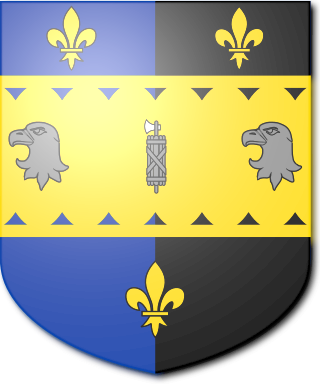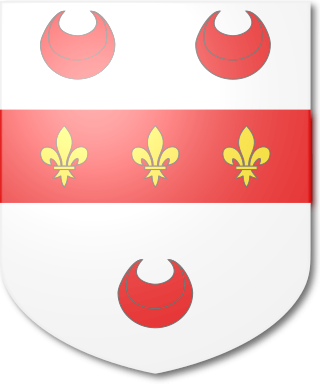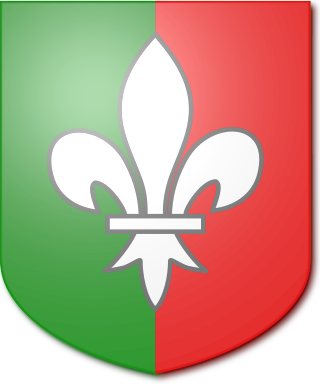
There have been two baronetcies created for members of the Jessel family, both in the Baronetage of the United Kingdom. One creation is extant as of 2012.

The Macartney Baronetcy, of Lish in the County of Armagh, is a title in the Baronetage of Ireland. It was created on 4 January 1799 for Sir John Macartney, Member of the Irish House of Commons for Fore and Naas. He had been knighted in 1796 for promoting inland navigation in Ireland. Macartney was the younger son of William Macartney, who represented Belfast in the Irish Parliament. The family have lived in Australia since the emigration of the third Baronet in the 19th century.

The Antrobus Baronetcy, of Antrobus in the County Palatine of Chester, is a title in the Baronetage of the United Kingdom.

The Whitehead Baronetcy, of Highfield House in Catford Bridge in the County of Kent, is a title in the Baronetage of the United Kingdom. It was created on 26 November 1889 for James Whitehead, Lord Mayor of London between 1888 and 1889 and later member of parliament for Leicester. His younger son, the third baronet, was also a Member of Parliament.

The Cradock-Hartopp Baronetcy, of Freathby in the County of Leicester and of Four Oaks Hall in the County of Warwick, was a title in the Baronetage of Great Britain. It was created on 12 May 1796 for Edmund Cradock-Hartopp, Member of Parliament for Leicestershire. Born Edmund Bunney, he was the husband of Anne Hurlock, granddaughter and heiress of Sir John Hartopp, 4th Baronet, of Freathby. On his marriage in 1777 he assumed the surname of Cradock-Hartopp in lieu of his patronymic according to the wills of his uncle Joseph Cradock and his wife's grandfather. His eldest surviving son Edmund, the second Baronet, died childless and was succeeded by his younger brother, William, the third Baronet. The title then descended from father to son until the death of his grandson, Charles, the fifth Baronet, in 1929.

There have been two baronetcies created for the Guise family, one in the Baronetage of England and one in the Baronetage of Great Britain. The latter creation is extant as of 2014.
The Greenaway Baronetcy, of Coombe in the County of Surrey, is a title in the Baronetage of the United Kingdom. It was created on 23 October 1933 for Percy Walter Greenaway. He was Chairman of Daniel Greenaway & Sons, printers and stationers, and served as Lord Mayor of London from 1932 to 1933. As of 2015 the title is held by his great-grandson, the fourth Baronet, who succeeded his father in that year.

The Chance Baronetcy, of Grand Avenue in the parish of Hove in the County of Sussex, is a title in the Baronetage of the United Kingdom. It was created on 19 June 1900 for James Timmins Chance, a grandson of William Chance one of the Chance brothers who started the family business in 1771. He became head of Chance Brothers and Company. He was High Sheriff of Staffordshire in 1868.

The Briscoe Baronetcy, of Bourn Hall, in the Parish of Bourn, in the County of Cambridge, is a title in the Baronetage of the United Kingdom. It was created on 12 July 1910 for John James Briscoe. He was a County Alderman, a Justice of the Peace and Deputy Lieutenant for Cambridgeshire. His eldest son, the second Baronet, died childless and was succeeded by his younger brother, the third Baronet. As of 2023 the title is held by the latter's great-grandson, the sixth Baronet, who succeeded from birth in 1994, his father having died earlier that year.

The Broadbent Baronetcy, of Longwood in the Parish of Huddersfield in the West Riding of the County of York, and of Brook Street, in the Parish of St George Hanover Square in the County of London, is a title in the Baronetage of the United Kingdom. It was created on 10 August 1893 for the noted physician William Broadbent. The title descended from father to son until the death of his grandson, the third Baronet, in 1987. The late Baronet was succeeded by his first cousin once removed, the fourth Baronet. He was the grandson of Walter Broadbent, third son of the first Baronet.

The Hogg, later Lindsay-Hogg Baronetcy, of Rotherfield Hall in Rotherfield in the County of Sussex, is a title in the Baronetage of the United Kingdom. It was created on 22 December 1905 for Lindsay Hogg, Conservative Member of Parliament for Eastbourne from 1900 to 1906. He assumed by Royal licence the additional surname of Lindsay before that of Hogg in 1906.

The Magnus Baronetcy, of Tangley Hill in Wonersh in the County of Surrey, is a title in the Baronetage of the United Kingdom. It was created on 22 June 1917 for the educationalist and Conservative politician Philip Magnus. He represented London University in the House of Commons from 1906 to 1922. He was succeeded by his grandson, the second Baronet, who was a historian and biographer. In 1951 he assumed by deed poll the additional surname of Allcroft. He died childless and was succeeded by his nephew, the third Baronet and present holder of the title.

The Millais Baronetcy, of Palace Gate in Kensington in the County of Middlesex and of St Ouen in Jersey, is a title in the Baronetage of the United Kingdom. It was created on 16 July 1885 for the painter and illustrator John Everett Millais. He was one of the founders of the Pre-Raphaelite Brotherhood. As of 2014 the title is held by his great-grandson, the sixth Baronet, who succeeded his father in 1992.

The Wiggin Baronetcy, of Metchley Grange in Harborne in the County of Stafford and of Garth Gwynion in Machynlleth in the County of Montgomery, is a title in the Baronetage of the United Kingdom. It was created on 17 June 1892 for Henry Wiggin. He was the founder of Henry Wiggin and Co Ltd, manufacturers of specialty metal products, and also represented Staffordshire East and Handsworth in the House of Commons. The second Baronet was High Sheriff of Staffordshire in 1896. The third Baronet was a colonel in the army and served as High Sheriff of Warwickshire in 1942. The fourth Baronet was high sheriff of Warwickshire from 1975 to 1976 and a deputy lieutenant of the county in 1985.

The Oakeley Baronetcy, of Shrewsbury, is a title in the Baronetage of Great Britain. It was created on 5 June 1790 for the Indian administrator Charles Oakeley. He served as Governor of Madras from 1790 to 1794. Frederick Oakeley was the second son of the first Baronet.

The Currie Baronetcy is a title in the Baronetage of the United Kingdom. It was created on 11 January 1847 for Frederick Currie, Foreign Secretary to the Indian Government and a member of the Supreme Council of India. He was a grandson of William Currie (1721–1781), nephew of William Currie (1756–1829), who was Member of Parliament for Upper Gatton and Winchelsea, and the brother of Vice-Admiral Mark John Currie.

The Fletcher, later Boughey Baronetcy, of Newcastle-under-Lyme and of Betley both in the County of Stafford, is a title in the Baronetage of Great Britain. It was created on 24 August 1798 for Thomas Fletcher, of Betley Court, Staffordshire, High Sheriff of Staffordshire in 1783 and 1789 and Deputy Lieutenant of the county. He was the husband of Elizabeth Fenton, granddaughter of George Boughey, of Audley, Staffordshire whose will provided for his great-grandson to inherit the Audley estate.

The ffolkes Baronetcy, of Hillington in the County of Norfolk, is a title in the Baronetage of Great Britain. It was created on 26 May 1774 for Martin ffolkes, FRS later High Sheriff of Norfolk and Member of Parliament for King's Lynn. The second Baronet represented Norfolk and Norfolk West in the House of Commons while the third Baronet represented King's Lynn. The fifth Baronet was Honorary Chaplain to Queen Victoria, Chaplain-in-Ordinary to Edward VII and George V and Chaplain to Edward VIII and George VI.

The Rycroft Baronetcy, of Calton in the County of York, is a title in the Baronetage of Great Britain. It was created on 22 January 1784 for Reverend Richard Rycroft. Born Richard Nelson, he was the only surviving son of John Nelson, and had assumed by Royal sign-manual the surname of Rycroft in lieu of his patronymic in 1758. The fifth Baronet was high sheriff of Hampshire in 1899. The sixth Baronet was high sheriff of Hampshire in 1938.

The Smith, later Smith-Marriott Baronetcy, of Sydling St Nicholas in the County of Dorset, is a title in the Baronetage of Great Britain. It was created on 1 June 1774 for John Smith, High Sheriff of Dorset in 1772. The second Baronet married Elizabeth Anne, daughter of Reverend James Marriott. The fourth Baronet assumed by Royal sign-manual the additional surname of Marriott. The fifth Baronet was High Sheriff of Dorset in 1873.



















